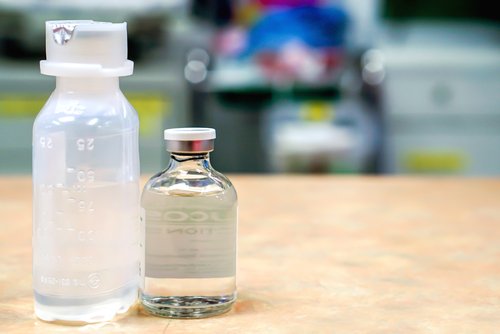A Phase 3 trial of Rituxan (rituximab) as a maintenance therapy in adults with mantle cell lymphoma after a stem cell transplant found that the treatment improved survival rates over four years.
Rituxan is a used to prevent the spread and growth of cancer cells in patients withCD20-positive non-Hodgkin’s lymphoma (NHL). Mantle cell lymphoma is a less common form of non-Hodgkin’s lymphoma, affecting roughly 15,000 people in the U.S. Most patients respond to initial treatment, but many relapse later on.
The results of the LYMA Phase 3 trial (NCT00921414) were published in the article “Rituximab after Autologous Stem-Cell Transplantation in Mantle-Cell Lymphoma” that appeared in the New England Journal of Medicine.
Preliminary results were also presented at the American Society for Hematology Annual Meeting and Exposition in late 2016.
The trial enrolled treatment-naive patients with mantle cell lymphoma, ages 18 to 65. Patients underwent induction treatment with Rituxan plus chemotherapy — first DHAP chemotherapy, and then CHOP chemotherapy — and those with a partial response were selected for autologous (self) stem cell transplant.
Among the 257 participants who received the transplant, only the 240 who achieved a response were chosen for the next part. Here, patients were randomized post-transplant to either stay on a regimen of Rituxan infusions every two months for three years, or to undergo observation with no maintenance therapy.
Patients were followed for a median follow-up of 50.2 months after the stem cell transplant.
Event-free survival (EFS) — the length of time before disease progression, relapse, death, severe infection, or allergy to Rituxan — was the trial’s primary endpoint. Progression-free survival (PFS) and overall survival (OS) were the secondary endpoints.
EFS after four years of follow-up was 79% in the Rituxan group, compared to 61% in the observation group.
Survival after four years without disease progression (PFS) was 83% of patients on Rituxan maintenance therapy versus 64% in the observation group. Overall survival, a measure of the percentage of patients who did not die from any cause, was 89% in the Rituxan group compared to 80% in the observation group.
Among low-risk and intermediate-risk patients, median PFS and OS were not reached, meaning that at the time of analysis more than half of patients were still alive and disease-free. Among high-risk patients, median PFS was 47.4 months and OS was 56.2 months.
Neutropenia, a lack of white blood cell called a neutrophil, was the most frequent severe side effect. Three patients in the rituximab group and one in the observation group died of a second cancer.
“Rituximab maintenance therapy after transplantation prolonged event-free survival, progression-free survival, and overall survival among patients with mantle-cell lymphoma who were younger than 66 years of age at diagnosis,” the researchers concluded.


